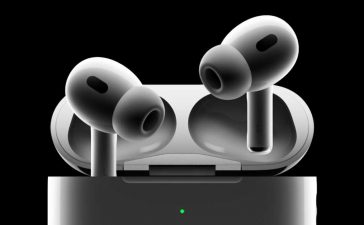Every business is a digital business, and it’s widely known that to truly realize the efficiencies of digital transformation, traditional departmental siloes must be broken down. As above, so below, and IT admins aren’t immune to change as different fiefdoms merge.
During last week’s JNUC event, I caught up with Michael Covington, Jamf vice president of portfolio strategy, to discuss these transformations and the extent to which Apple benefits.
What’s critical to understand is that the divisions between different teams within IT support are eroding as the roles of security, device management, and deployment merge to become a strategically holistic whole. The big idea is to create streamlined workflows that scale for complexity while also being consumer simple. You see evidence of this in every successful service or app, consumer, or enterprise.
 Jamf
JamfMichael Covington, Jamf’s vice president of portfolio strategy.
“Organizations have historically had the Mac team, the mobile team, the security team,” Covington said. “I’m actually seeing shifts organizationally to bring those together. But what I care about is that the teams are able to get the tools turned on with the policies they need,”
Evidently the built-in support for standards, endpoint protection, and compliance available with Jamf’s ecosystem help, while the continued ascendancy of Apple Silicon pretty much opens the conversation around PC replacement.
Apple’s emerging opportunity
Driven by efficiency, choice, and significantly lower total cost of ownership, we’re seeing increased Mac adoption among business. That’s great for existing companies, but we live in a rapidly changing time in which some of the world’s most rapidly emerging economies are becoming sufficiently vibrant to support a growing number of new business ideas.
Does this suggest those emerging businesses will go Mac from the get-go?
Covington pointed to US start-up culture as a guide to what to expect. He observed that most US start-ups have no legacy equipment they need to keep on board, which means they can and do choose Macs. “They go straight from zero to 100 computers in no time,” he said. “I think you’re going to see something very similar in emerging economies.”
It’s a prediction that isn’t particularly hard to justify. After all, not only are Mac sales into US enterprises rising rapidly, but in India Apple’s deep commitment to building up its manufacturing base has translated into an 89.5% year-on-year growth in Mac sales.
Why Macs are good for business
Why are Macs, particularly managed Macs, a boon for business? In the olden days of tech, device management and security relied on different teams running different tools, and endpoint protection wasn’t really a thing as businesses staked security on old models of perimeter protection. Mobile and BYOD changed this structure. Businesses found they needed solutions to deploy, manage, and protect remote devices — and the continuing COVID-19 plague accelerated those pre-existing trends. Today, IT seeks zero-touch, zero-trust deployment, management, and protection. All are provided within Apple’s ecosystem and by Apple-in-the-enterprise partners such as Jamf.
“I’m amazed that we’re at a point now where I’m talking about security or management as a core foundational element of our security narrative, which for me is very exciting,” said Covington. “That is interesting because that’s a massive vault even in the last three years, I think, for Jamf itself.”
Your Mac is not a digital island
What is also important is that Macs usually can run the software modern enterprise needs them to run. It’s no longer correct to think that Macs are unfit for business; they even run Windows very well, at a pinch.
“What I’m getting really excited about is the applications that businesses are finally deploying to these devices that are still a little niche in the organization,” Covington said. “They’re still not quite 50/50 in most organizations in terms of the split between Windows [and Macs], but Macs, and especially iPads and iPhones, they are now getting business application access. And…you’re able to deliver not only those tools to end users on these devices, you’re also able to do it in a way that actually the experience is better than it is on a Windows device….
“That is a really compelling play for more workers, especially in choice organizations, to say, ‘Hey, I want a Mac,’ or ‘I want an iPad,’ or whatever it might be,” he said. “I think it also is going to encourage more workers to take advantage of Apple’s platform capabilities.”
As an aside, many industry watchers see Windows as a “declining ecosystem,” with Apple poised to fill that void.
Generative AI for IT
An exciting announcement at JNUC involved the use of generative AI to help Mac admins do their work. The implementations should empower IT, but won’t it also make employees, already anxious at using managed devices, more concerned? Covington pointed out that the focus of the company’s work at the moment is on enabling IT, rather than focusing on end users, but he did speculate a little on the potential for automated, self-aware equipment.
“I think when you have a work-related device that is deployed for a purpose, such as perhaps an airline, where you’ve got a pilot who’s picking up an iPad that might be fresh for that day, they may need to actually have that device configured in a certain way for it to be ready for work,” he said.
“Ready for work is going to vary significantly across those industries. I think in those situations, you can actually use AI as almost a local coach on how that individual can stand in as the role of admin and essentially configure the device if they’re given the right permissions to do so.”
You can find out more concerning Jamf’s approach to genAi here.
Reaching the places Apple doesn’t reach
This stuff scales. In the US, Apple Business Manager is enabling small businesses, and once a business grows it can scale up to third-party solutions. Jamf Pro, for example, provides buckets of protection along with the ability to manage and force apps and software upgrades onto remote devices — all thanks to the AP’s Apple provides to partners.
“What’s interesting to me now is how integrated the capabilities are to deploy, get people into those devices, the applications installed on those devices for productivity, and then to essentially secure end-to-end the content that is business-oriented for that organization,” Covington said.
In addition, Apple’s work with Gatekeeper and X-Protect means Mac-using businesses, even start-ups, gain pretty good security right from the start.
Building digital business stability
Jamf continues to improve its flagship Jamf Pro 11 offering. The latest iteration boasts a cleaner user interface and powerful new capabilities, such as support for declarative device management, Jamf Cloud app distribution, content distribution, automation frameworks and the ability to force devices to upgrade and get told when they do.
At its root, the company and its products augment the core Apple stack in the enterprise. Smart things Jamf is able to bring include better support for shared devices or enabling access to private clouds.
“There are a lot of capabilities we help business with that go well beyond just configuring the devices that come out of the box and making it so somebody can sign on,” he said.
Slowly but surely, piece by piece, Apple’s ecosystem is becoming the most appropriate ecosystem for any enterprise seeking digital business stability in our choice-driven, hyper-connected age.
Please follow me on Mastodon, or join me in the AppleHolic’s bar & grill and Apple Discussions groups on MeWe.
Copyright © 2023 IDG Communications, Inc.












